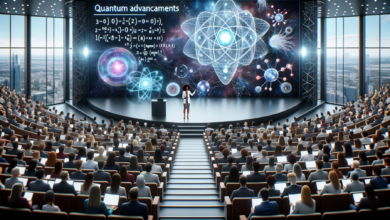
- Sophisticated Robots with AI Capabilities
- Medical Supply Delivery Drones
- Increased Productivity and Efficiency
- AI as a Programming Language for Robots
The convergence of AI and robotics has ushered in a new era of intelligent machines. These robots, once confined to rigid preprogrammed tasks, now exhibit adaptability, learning, and autonomy. In this blog post, we explore how AI is revolutionizing robotics across various domains.
Sophisticated Robots with AI Capabilities
In the world of robotics, a new generation of machines emerges—sophisticated robots infused with the power of artificial intelligence (AI). These remarkable creations transcend static programming, becoming adaptable, perceptive, and even autonomous. Join us as we explore how AI is reshaping the world of robotics:
- Machine Learning and Perception
- Computer vision and natural language processing are key components of AI that empower robots to perceive and understand their environment.
- Robots equipped with cameras, LIDAR (Light Detection and Ranging), and other sensors can recognize objects, navigate obstacles, and even interpret human gestures.
- For example, self-driving cars use AI algorithms to process visual data from cameras and make real-time decisions about steering, braking, and acceleration.
- Adaptive Behavior and Learning
- Traditional robots follow preprogrammed instructions, limiting their flexibility. AI-enabled robots, on the other hand, can learn from experience.
- Reinforcement learning allows robots to adapt their behavior based on feedback from their actions. They learn to optimize tasks by trial and error.
- These robots can adjust their movements, grasp objects more effectively, and handle unexpected situations.
- Cobots (Collaborative Robots)
- Cobots work alongside humans, assisting in tasks that require precision, strength, or repetitive actions.
- With AI, cobots can sense human presence, adjust their speed, and avoid collisions. They become valuable teammates in manufacturing, healthcare, and logistics.
- Autonomous Exploration and Mapping
- AI-powered robots explore unknown environments autonomously.
- Swarm robotics leverages collective intelligence, where multiple robots collaborate to map an area, search for survivors in disaster scenarios, or explore other planets.
- These robots share information, adapt to changing conditions, and collectively achieve complex goals.
- Emotion Recognition and Social Interaction
- Some robots are designed to interact with humans socially. AI algorithms enable them to recognize emotions, facial expressions, and speech patterns.
- Pepper, a humanoid robot, engages in conversations, reads emotions, and provides companionship in various settings.
- Predictive Maintenance:
- AI-equipped robots can predict when machinery or equipment will fail.
- By analyzing sensor data, they identify patterns indicative of wear and tear. This enables timely maintenance, reducing downtime and costs.
- Robotic Surgery and Healthcare:
- Surgical robots, guided by AI algorithms, assist surgeons during complex procedures.
- They enhance precision, minimize invasiveness, and improve patient outcomes.
- Additionally, AI-powered exoskeletons aid rehabilitation and mobility for individuals with physical disabilities.
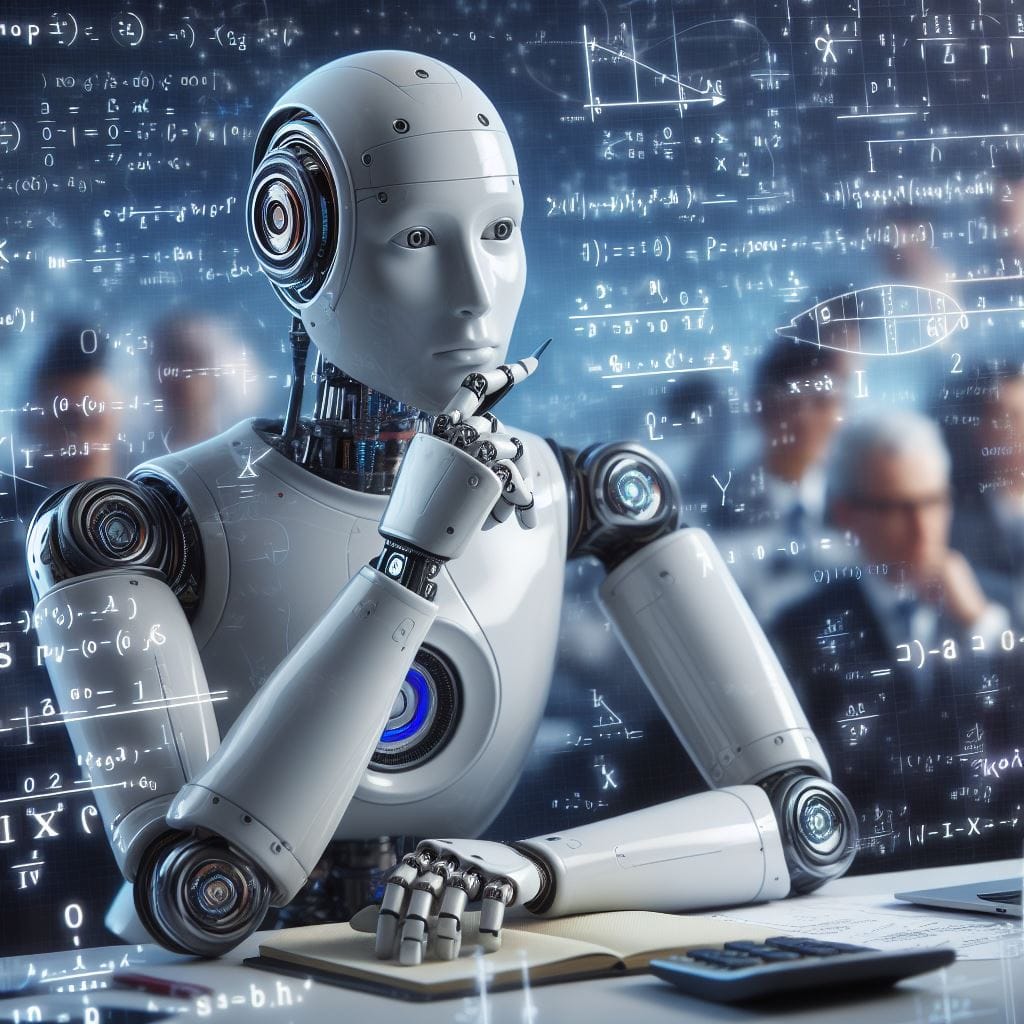
Medical Supply Delivery Drones
Imagine a fleet of drones crisscrossing the skies, delivering critical medical supplies to remote villages, disaster-stricken areas, and inaccessible regions. These aerial heroes, powered by AI, are revolutionizing healthcare logistics. Buckle up as we delve into the fascinating world of medical supply delivery drones:
- Medical Supply Delivery Drones:
- Zipline, a California-based company, specializes in humanitarian deliveries using drones. They deliver blood and medical supplies to remote locations in Rwanda and Ghana via BVLOS (Beyond Visual Line of Sight) flights.
- In Europe, TU Delft has trialed drones for emergency response, delivering first aid items like Automated Defibrillators (AEDs) and enabling two-way video communication with emergency services.
- Google’s Project Wing tests UAV operations in Australia, aiming for disaster relief by delivering aid, including water and medical supplies.
- Benefits of Drones in Medical Supply Chain:
- Safety: Drones reduce the risk of errors and the number of transfers related to deliveries. They operate autonomously, minimizing human involvement.
- Improved Security and Traceability: Drones enhance the security and transparency of the delivery system. Tracking and monitoring become more efficient.
- Effective Payload Management: Drones optimize payload capacity, ensuring efficient transportation of medical supplies without overburdening resources.
- Reduced Delivery Time and Greenhouse Gas Emissions:
- Traditional road networks face traffic congestion, especially in urban areas. Drones can complete time-critical medical shipments faster.
- With an estimated 2.5 million movements between hospitals and associated sites in the UK alone, efficient UAV-based transport networks can improve patient well-being and reduce emissions.
- Applications Beyond Prescriptions:
- Pharmacies like Amazon Pharmacy, Walgreens, and CVS Health experiment with drone delivery for medications.
- Drones can also transport lab samples, medical supplies, and items for hospital-at-home services.
- Emergency response systems benefit from faster delivery of defibrillators and other critical supplies.
AI-enabled medical drones bridge gaps, enhance accessibility, and revolutionize healthcare delivery. From remote areas to emergency situations, these flying allies play a vital role in saving lives and improving patient outcomes.
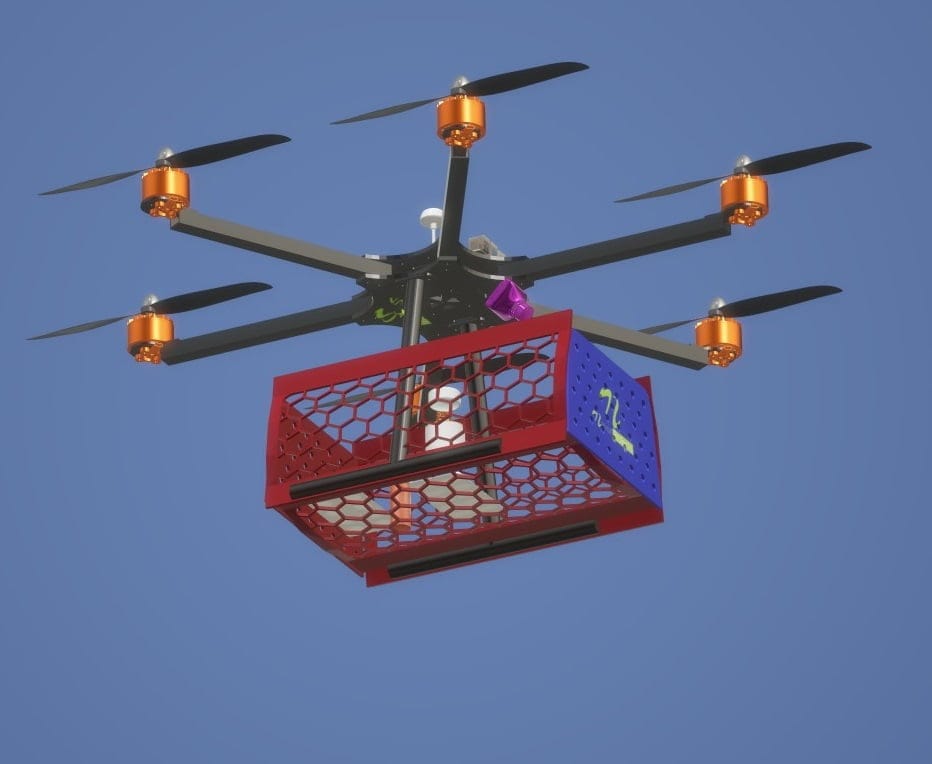
Increased Productivity and Efficiency
From factory floors to warehouses, robots are no longer mere cogs in the machinery—they’re intelligent collaborators. Thanks to AI, these robots make decisions, adapt on the fly, and optimize tasks. In this section, we unravel how AI boosts productivity, efficiency, and safety across industries:
- Autonomous Decision-Making:
- AI-equipped robots can analyze data from their sensors and surroundings.
- They make real-time decisions based on this information, adapting to changing conditions.
- For instance, in manufacturing, robots can adjust their assembly line tasks based on variations in product dimensions or quality.
- Flexible Adaptation:
- Traditional robots follow fixed paths, limiting their versatility.
- AI-enabled robots can learn from experience and adapt their movements.
- In warehouses, they optimize picking routes, adjust to stock changes, and handle diverse items efficiently.
- Collaborative Robots (Cobots):
- Cobots work alongside humans, enhancing productivity.
- They can sense human presence and adjust their speed or movements accordingly.
- In assembly lines, cobots assist workers by handling repetitive or physically demanding tasks.
- Predictive Maintenance:
- AI analyzes sensor data to predict equipment failures.
- Robots can schedule maintenance before breakdowns occur, minimizing downtime.
- This is crucial in industries like aviation, where timely maintenance prevents costly disruptions.
- Quality Control and Inspection:
- AI-powered vision systems detect defects in products.
- Robots equipped with cameras inspect items for flaws, ensuring consistent quality.
- In automotive manufacturing, robots verify welds, paint quality, and part alignment.
- Logistics and Inventory Management:
- AI-driven robots optimize warehouse layouts and inventory placement.
- They track stock levels, manage restocking, and improve supply chain efficiency.
- Amazon’s Kiva robots navigate warehouses, fetching items for human workers.
- Agriculture and Precision Farming:
- AI-powered robots monitor crops, analyze soil data, and apply fertilizers or pesticides precisely.
- They reduce waste, enhance yields, and promote sustainable farming practices.
- Energy Efficiency:
- AI helps robots operate more efficiently.
- In smart buildings, robots adjust lighting, heating, and cooling based on occupancy and external factors.
- This reduces energy consumption and lowers costs.
- Personalized Customer Service:
- Robots with AI can interact with customers in retail stores, hotels, or airports.
- They provide information, guide visitors, and even process simple transactions.
- Remote Operation and Telepresence:
- AI-enabled robots can be controlled remotely.
- Surgeons use teleoperated robots for minimally invasive surgery, with AI assisting in precise movements.
AI empowers robots to be more than mere machines. They become adaptable, efficient, and valuable assets across various domains, improving our lives and industries.
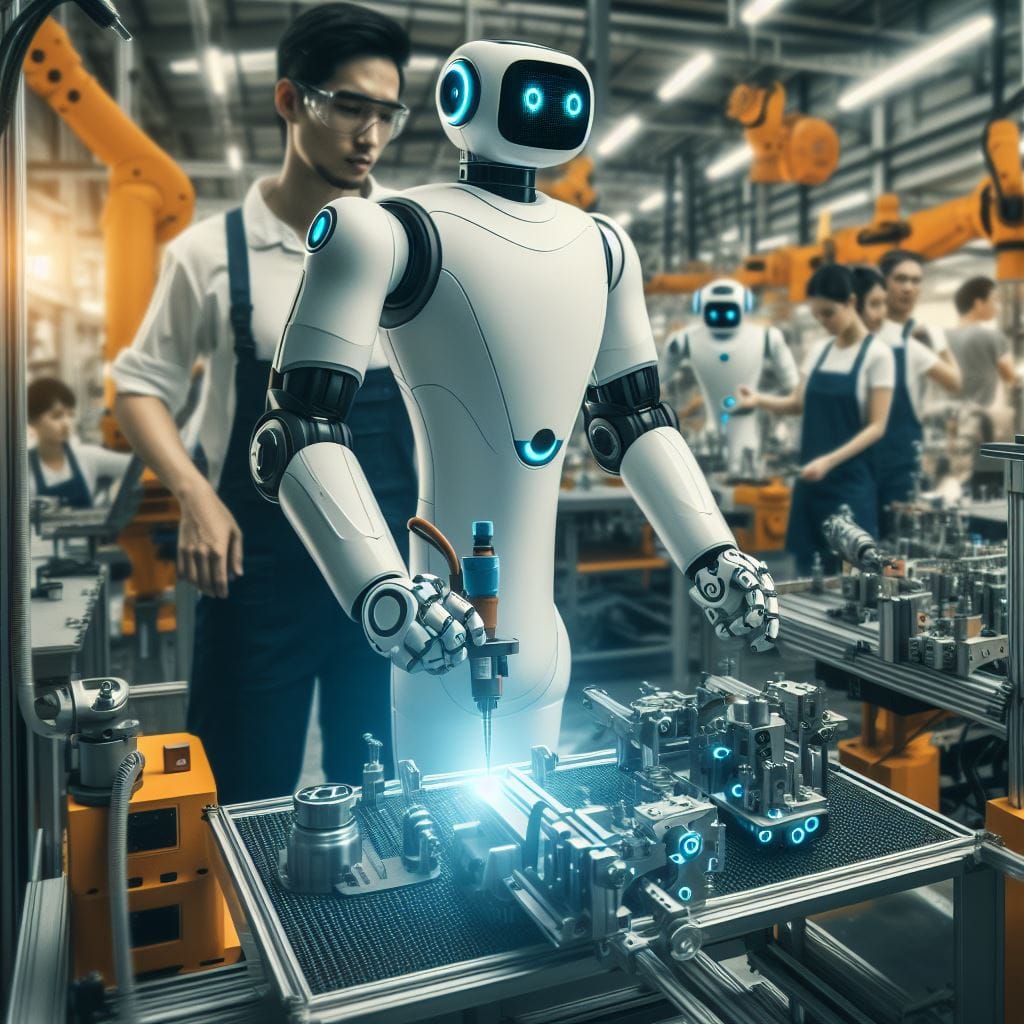
AI as a Programming Language for Robots
Move over, traditional programming languages. AI is now the lingua franca for robots. It’s not just about syntax; it’s about enabling robots to understand context, learn from demonstrations, and converse with us. Join us as we explore how AI provides a dynamic, adaptable programming language for our mechanical companions:
- Robotic Programming Languages:
- Traditional robot programming involves writing explicit instructions in languages like C/C++ or using graphical interfaces.
- AI introduces more flexible and adaptive approaches.
- ROS (Robot Operating System), although not a language itself, is widely used. It provides a framework for building robot software using various programming languages.
- Behavior Trees:
- Behavior trees are a hierarchical structure for defining robot behavior.
- Nodes represent actions, conditions, or control flow.
- AI algorithms can dynamically modify the tree based on sensor inputs or task requirements.
- For example, a robot might switch from “navigate to point A” to “avoid obstacle” based on real-time data.
- Reinforcement Learning (RL):
- RL allows robots to learn from experience.
- Instead of hardcoding behaviors, robots explore their environment and receive rewards or penalties.
- They optimize their actions to maximize cumulative rewards.
- RL has been used for tasks like grasping objects, drone flight, and robotic arm control.
- Probabilistic Programming:
- Probabilistic programming languages (PPLs) model uncertainty.
- Robots can reason about sensor noise, imprecise measurements, and environmental variability.
- PPLs like Pyro or Stan enable robots to make informed decisions even in uncertain situations.
- Learning from Demonstration (LfD):
- LfD allows robots to learn by observing human demonstrations.
- AI algorithms extract patterns from these demonstrations and generalize them.
- A robot can learn to perform tasks like cooking, assembly, or cleaning by watching humans.
- High-Level Task Specification:
- Instead of low-level commands, robots can be programmed with high-level goals.
- PDDL (Planning Domain Definition Language) and Golog are examples.
- A robot might receive a goal like “serve coffee” and autonomously plan the necessary steps.
- Natural Language Interfaces:
- AI enables robots to understand and respond to natural language commands.
- Users can interact with robots using voice or text.
- For instance, a robot in a smart home might respond to “turn off the lights” or “vacuum the living room.”
- Transfer Learning:
- Robots can leverage pre-trained AI models.
- For vision tasks, they can use CNNs (Convolutional Neural Networks) trained on large image datasets.
- This accelerates their ability to recognize objects or navigate environments.
- Adaptive Control Policies:
- AI algorithms adjust robot control policies based on context.
- A robot might switch from aggressive to cautious behavior when near obstacles or humans.
- These policies adapt to the situation, improving safety and efficiency.
- Human-Robot Interaction:
- AI helps robots understand social cues.
- They can interpret gestures, emotions, and context during interactions.
- This is crucial for collaborative tasks and service robots.
AI provides a rich set of tools for programming robots, making them more versatile, adaptable, and capable of handling complex tasks. As research continues, we’ll see even more innovative ways to bridge the gap between human intent and robotic action.
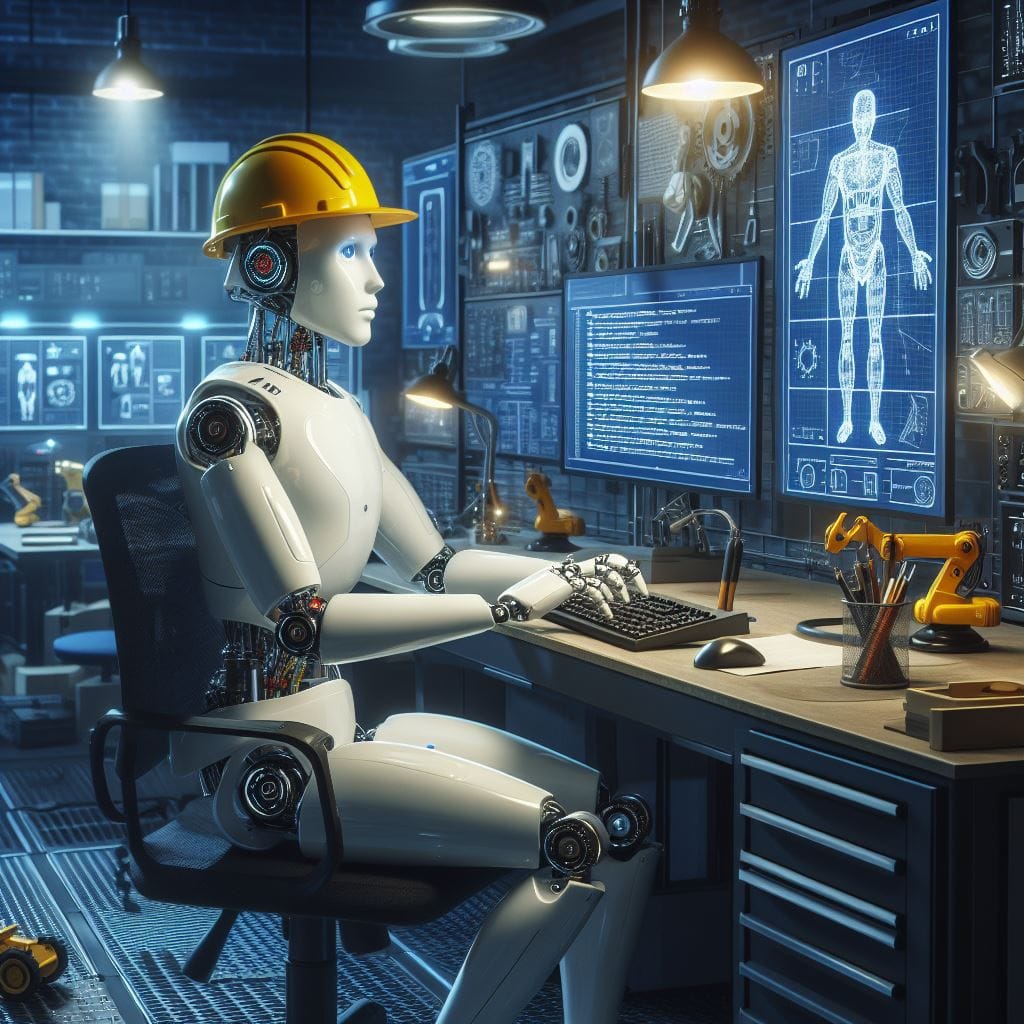
The synergy of AI and robotics transforms robots from mere mechanical devices into intelligent, adaptable companions. Whether it’s medical drones, collaborative cobots, or efficient warehouse robots, these AI-powered machines shape our future.
As research continues, we anticipate even more remarkable breakthroughs, bridging the gap between human intent and robotic action.

